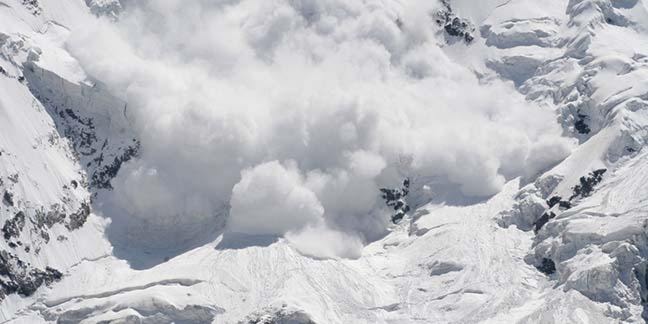Barry Coulter
After several weeks of cold weather, temperatures are soaring and bringing snow storms, and subsequently great conditions for backcountry recreation.
And this makes it a good time to exercise great caution, says Avalanche Canada, as avalanche danger is also on the rise.
James Floyer, a forecaster with Avalanche Canada, based in Revelstoke, said Cranbrook is positioned in one of the more interesting transitional areas as the next few days of snow storms and weather changes occurs.
"If you go west, through Kootenay Pass, we're expecting quite a lot of snow, so we've got a storm story," Floyer told the Townsman. "Further east, we've more got a warming and a travel condition story."
Floyer said that in the higher areas to the west, around Kootenay Pass, a lot of snow is expected, and natural avalanches (not triggered by humans) will be likely.
"Assuming the weather does what it's predicted to do, I imagine we'll go through an active avalanche cycle," Floyer said.
To the west the avalanche danger ratings will be high. A short period of high danger is expected, and then that will start to come down again as the storms diminish, Floyer said.
"Further east, it's going to be a little bit more subtle, but in the long term it may turn out to be a little bit more dangerous."
Floyer said these regions have seen lower amounts of snowfall so far.
“But what we’re going to notice is that this new snow and these warm temperatures are going to create an upper slab — a denser surface to the snow — which is what will combine with the weaker, sugary snow that we’ve seen in those areas, or at least had reports of. And these are areas like St. Mary’s, Hellroaring Creek, or maybe even further over into the Rockies east of Fernie.
“What that weak base has been missing is that cohesive, stiffer, denser upper snow, which these weather conditions are absolutely going to promote.”
The cold temperatures, which have been a feature through most of this winter, combined with relatively low snow amounts in some of the areas, has turned the snow to sugar, Floyer said.
“It does this thing called ‘faceting,’ which changes the snow cystals into a crystaline sugary consistency that is really quite weak. It’s fine when it’s just of there. It can be a little challenging to ride through. You get off your snow machine or step off your skis, and you sink pretty much all the way to the ground.
“But this faceted snow will likely be covered with a layer of thick, dense snow, great for skiing or sledding. And this is where is comes around to that ‘travel story.’”
First of all, Floyer said, the snowpack is being set up as a more dangerous situation with a fresh dense slab on top and weak snow below. Secondly, people are suddenly going to find its a lot easier to travel through the snow, and easier to get into the bigger, steeper terrain, where the recreation conditions will be fantastic.
“But it might not be the kind of terrain you’d want to choose right now, when we’ve got that fundamentally weak snowpack.”
While danger ratings in regions west of Cranbrook will diminish after the storms pass this week, east of Cranbrook in the lower snow pack areas, there probably won’t be the same kind of spike in avalanche danger. But in some ways, Floyer said, it will be a trickier problem, a little more sporadic.
“It’s a bit of a lower grade, but it will keep going for longer.
“And it’s a human triggering story. You’ll need something like a sled or a ski to trigger those avalanches. Even though it’s not such an acute problem, it’s may be more of an important problem in the long term, because it’s the kind of thing people are more likely to be surprised with.”
Recreators and those who will venture into the backcountry should check the Avalanche Canada website on a regular basis (www.avalanchecanada.ca), and exercise due caution. It’s a time for monitoring conditions, and a time for backing off a little,” Floyer said.
“We’ve had such a good season so far. There are a lot of people, this year at least, who’ve become accustomed to pretty much going anywhere with impunity — with a few exceptions obviously. But it’s been a very good season so far, and we’re at the cusp of a little bit of a change.”
